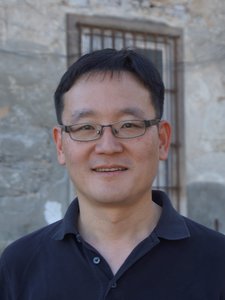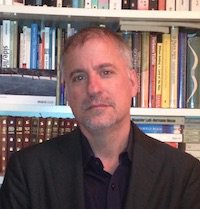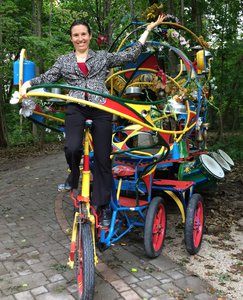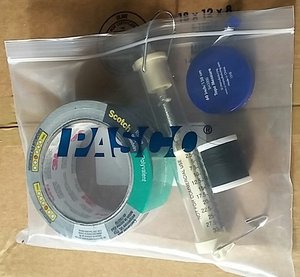Graduate Office

The COVID-19 pandemic’s impact has been also huge on the graduate program and education. Most notably, all laboratory-based research activities stopped for a few months, affecting a large number of graduate students’ research progress. The graduate office had to quickly adapt to the “new normal,” and continue to facilitate many on-line exams and meetings. Using the new departmental Zoom account, the graduate office was able to schedule exams, provide instructions for the convenors, and ensure that the students were equipped with necessary writing devices. To date 30 PhD qualifying exams, 13 PhD departmental oral exams, 13 SGS final oral exams qualifiers, and 10 MSc (Option II) exams all went without a glitch. In addition, 67 students had their annual committee meetings via online. The graduate office was also responsible for helping graduate students in need of financial assistance during the pandemic. To date 37 graduate students received around $19,000 from the Graduate Student Emergency Bursary, which was created to address short term financial challenges resulting from the COVID-19 pandemic.
Young-June Kim, Associate Chair, Graduate Studies
Undergraduate Office

The COVID-19 pandemic has obviously created significant challenges for our undergraduate program, for both faculty and students. In March 2020, courses that were already in progress had to be quickly transitioned online, which went relatively smoothly, under the circumstances. Over the summer, following the guidance of the Faculty of Arts & Science, plans were developed to teach most of our fall courses in “dual-delivery” mode, where lectures would be given in-person, to a reduced number of students (those willing and able to attend) and streamed online to the remainder of the class, including students who chose not (or were unable) to return to Toronto for the fall term.
Over the summer, due to the evolution of public health situation, as well as student and faculty concern about in-person classes, many of the courses that had been planned as dual-delivery were transitioned fully online. A few dual-delivery courses were maintained, but these too were required to move fully online in mid-October, following a decision by the Arts & Science leadership team, reacting to updated public health advisories for Toronto.
In order to accommodate students who are in very different time zones, lectures in many courses are also being recorded and made available for offline viewing, to allow students the option of watching these at a time which is convenient for them. In some cases this is being done also for tutorials, though clearly this option is less effective in this case, given that tutorials are the main forum in which student interactions with course instructors or Teaching Assistants can take place. Assessments have also been challenging, in terms of scheduling, format, and maintaining academic integrity.
Physics is an inherently experimental field, so an important part of our undergraduate programs relates to experimental work, which is introduced as part of our first-year courses, and covered by dedicated courses in each of the later years of our programs. These are courses for which the learning objectives cannot be met by an online course. So while online practicals are being offered for our large first-year courses, lab courses for later years, PHY224, PHY324 and our Advanced Physics Lab, are being offered only in-person, with slightly reduced enrollment caps in some cases, due to physical-distancing requirements. In the case of the Advanced Lab, which is most commonly taken in the final year of our Specialist programs, students unable to take the course in-person are being accommodated in line with the Dean’s Promise, which states that a student’s graduation will not be delayed due to an inability to take a required course in-person. View the Dean’s Promise here: https://www.artsci.utoronto.ca/current/faculty-registrar/graduation.
Another important part of the undergraduate experience, for many students, is the opportunity to engage in research, either over the summer or during the Fall and Winter academic term, either as part of a program, such as the NSERC USRA program, or the Summer Undergraduate Research Fellowship (SURF) program that is run by the department, or as a supervised research course (PHY478H1, PHY479Y1). These opportunities were obviously also affected by the pandemic, due the shutdown of on-campus research activities. However, some activities were able to continue remotely. In particular, both the USRA and SURF programs were able to proceed, with 21 USRA holders and six SURF recipients working on research projects that were adapted to not require a campus presence. Students who have engaged in research projects over the past year will be given an opportunity to present the results of their work at this year’s Undergraduate Research Fair, which has been delayed by the pandemic, but which we hope to hold in January 2021. The number of students enrolled in PHY478 and PHY479 this year are consistent with numbers from recent years and do not appear to be affected by COVID-19
The Winter 2021 term will start in much the same way as the Fall 2020, with courses mostly fully online, but with a few dual-delivery courses (public-health considerations permitting), and with the lab courses referred earlier being offered only in-person.
Peter Krieger, Associate Chair, Undergraduate Studies
Undergraduate Office
Physics 131 Practicals During COVID-19

What is the value of an introductory physics course in the middle of a global pandemic and continental racial reckoning?
An introductory physics course can bring people together and empower them to wield the tools of physics to solve problems and help people. In science, as Richard Feynman famously said, “The first principle is that you must not fool yourself—and you are the easiest person to fool.” As we confront the coronavirus infodemic and pervasive racist ideas, we urgently need to refine and develop our tools to not fool ourselves. Physics offers a powerful toolbox to propose and test our ideas. It is this toolbox, more than any specific physics content, that I hope students take with them from Physics 131-132. Wherever we are, we can experiment with ideas from introductory physics. Not only does today’s everyday technology allow us to communicate while physically distanced, it also provides a pocket laboratory to quickly and creatively test hypotheses about motion. We can take a quick video of a ball moving through the air or of a pendulum moving back and forth. We can slide a shoe or roll a can down a tilted surface. We can compassionately collaborate and practice applying the tools of science with everyday objects in an hour or two.
In Physics 131-132, we use an approach validated by physics education research called the Investigative Science Learning Environment (ISLE). This approach has been developed over the past few decades by Eugenia Etkina, Distinguished Professor of Science Education at Rutgers University, and collaborators. It centers on two core intentions: (1) We want students to learn physics by thinking like physicists; by engaging in knowledge-generating activities that mimic the actual practices of physics and using the reasoning tools that physicists use when constructing and applying knowledge. (2) The way in which students learn physics should enhance their well-being.
This summer, two graduate teaching assistants, Nariman Khazai and Emily Tyhurst, and I wrestled with the challenge of how to design ISLE labs for an online version of Physics 131 with over 900 students. Small-group collaboration has been vital both to student learning and to social well-being in Physics 131, since David Harrison and collaborators first implemented the Practicals and designed the Practical rooms with that in mind. In lieu of the whiteboards on which pods of 3 or 4 students would collaborate and present their results, we are using shared online documents that each pod of students can co-edit. The university-endorsed platform that permits this functionality is Microsoft Teams, where students can video-chat, text-chat, and co-edit a shared document all within a permanent Teams Meeting. Each lab is spread over two weeks. In the first week, each pod of students designs an experiment together that they can each do at home with the materials they have available to them. The Physics Department is providing a financial credit to each student to offset the cost of basic useful materials, such as a spring scale, tape measure, and string. In the second week of each lab, each student conducts the experiment their pod designed, collects and analyzes the data, and then the pod collaborates on combining their results and drawing conclusions. For some labs, we provide easy-to-run python notebooks, created by Emily Tyhurst, that produce plots from data files to help students present and interpret their data. To help teaching assistants facilitate productive group dynamics remotely, we asked each pod to create a Team Charter in the first week, and each student also completes a brief pod dynamics survey every week.
Applying the tools of science to teach science, we are continually adapting our approaches. I am grateful for an amazing team of teaching assistants and supportive colleagues, administration and staff as we run online Practicals for such a large class for the very first time. As we strive to inspire our diverse students to generate and test their own knowledge, we also have a lot to learn from them. I look forward to sharing what we learn.
Carolyn Sealfon - Teaching-Stream Faculty and Lecturer

( Basic Materials Kit for PHY 131)

